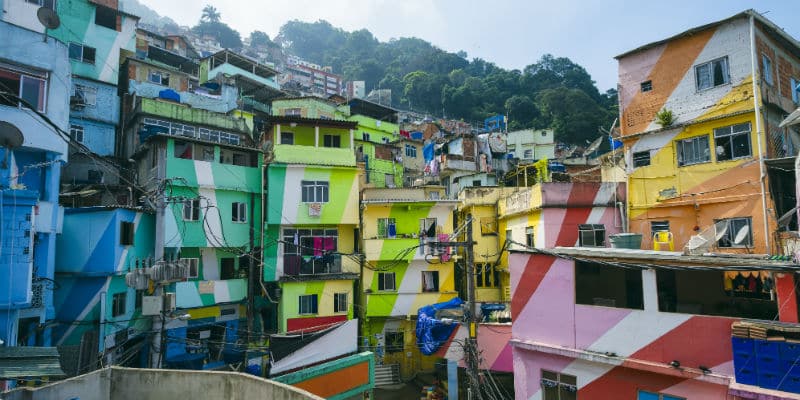I spent two years in my early twenties living in the great city of São Paulo, Brazil. One of the first things I noticed after I arrived was the omnipresence of Havaianas flip flops. People wear them to the store, around the house, out with friends, and even while playing soccer or doing yard and construction work. You find them on the feet of women, men, and children alike. With their bright colors and iconic design, they’re a symbol of the country’s vibrant culture, permeating every social stratum of society from the narrow alleys of favelas to the chic shops and sophisticated museums of downtown São Paulo.
Yet Havaianas weren’t always worn so widely. Modeling the design after “zori”—a type of Japanese sandal made from rice straw, the makers of Havaianas originally sold the sandals primarily to lower-income workers and families for whom comfortable, durable shoes were too expensive. To reach the remote towns and cities where their customers tended to live, executives at Alpargatas, the company that owned Havaianas, assembled a fleet of salespeople who packed vans full of flip flops and drove them into the Brazilian countryside. Townspeople would often line up to greet the vendors as they arrived, anxious to purchase the cheap, comfortable sandals sold in plastic bags.
Within just two years, most of Brazil’s low-income workers owned a pair of Havaianas. In 1980, the Brazilian government included Havaianas in a list of products “fundamental to Brazilian life”. Thanks to celebrity endorsements and some excellent marketing campaigns, the sandals have since gradually moved upmarket and expanded internationally, with high-end retailers like Nordstrom and Saks Fifth Avenue selling the footwear in the United States. Still, Havaianas haven’t lost their identity as a sandal for everyday people. Today, Brazilians buy 200 million pairs of sandals each year, an especially impressive total given Brazil’s population of just over 200 million people.
While Havaianas have woven themselves into the very fabric of Brazilian culture, they’ve also created prosperity for Brazil’s economy and people, generating thousands of new jobs in manufacturing, sales, distribution, and marketing. The company has invested in infrastructure to support its business operations throughout the country, including building factories in some of the same remote, less-developed regions where it sold shoes in its early days. Its vast profits have provided support for the Brazilian government in the form of taxes. And the effect of Havaianas now extends far beyond Brazil to more than 60 countries around the globe where the flip flops are now sold. Just last month the company announced it would invest $20 million in India during the next five years to create a new market for the sandals.
Havaianas’ upward trajectory is more than just a story about popular flip flops. Its roadmap to success offers valuable lessons for any entrepreneur looking to innovate and create a positive impact in an emerging market.
First, identify and target nonconsumption. Nonconsumption is evident when people resort to using sub-optimal workarounds to make progress in their lives because existing products and services on the market are too expensive or complicated to use. For example, since comfortable, durable shoes were simply out of reach for many Brazilians, many people either had to use old, uncomfortable, and unreliable footwear or went barefoot, exposing themselves to injury and infection. This meant that rather than compete with high-end footwear brands targeting wealthy consumers, all the designers of Havaianas had to do was create a product that was better than nothing. By targeting nonconsumption, the makers of Havaianas tapped into a vast new market with millions of customers who weren’t served well by previous solutions.
Second, keep the solution simple and affordable. The reason other shoemakers failed where Havaianas succeeded was that their products were too sophisticated; they used expensive materials and only sold their products in stores, raising costs and making their products unaffordable. Havaianas, on the other hand, were supremely simple and therefore inexpensive. Made with just a rubber sole and a strap, the sandals were meant to be “basic, just like everyday Brazilian rice and beans.”
We often like to think that the solution to difficult problems will come from sophisticated, breakthrough technology, yet such solutions are usually only available to the minority of people who can afford them. Frequently a better answer is creating products that are simple, affordable, and “good enough,” which allow people to make progress in their lives where they couldn’t before. This results in more people participating in the economy, leading to growth and job creation.
Third, don’t just make good products; ensure the market’s success. Havaianas’ design checked all the right boxes to be a successful product: they were durable, comfortable, and affordable. But the sandals likely wouldn’t have become popular if they were only sold by retailers in major cities since many potential customers lived in remote areas or in favelas, where poverty was rampant. Because conventional product distribution in these regions was complicated and unpredictable, Havaianas’ creators integrated distribution and retail into their own business operations by creating a fleet of traveling salespeople in company vans, recognizing that even the best product couldn’t make profits in a vacuum. When creating new markets, entrepreneurs often need to internalize into their business the necessary components for the market as a whole to succeed. This often requires investment upfront.
Havaianas have made big strides since first appearing on the feet of Brazilians a half-century ago. The timeless flip flops have certainly become a global symbol of Brazilian culture, but to me, they now also represent the powerful positive impact a simple innovation can have on a people and a country.



